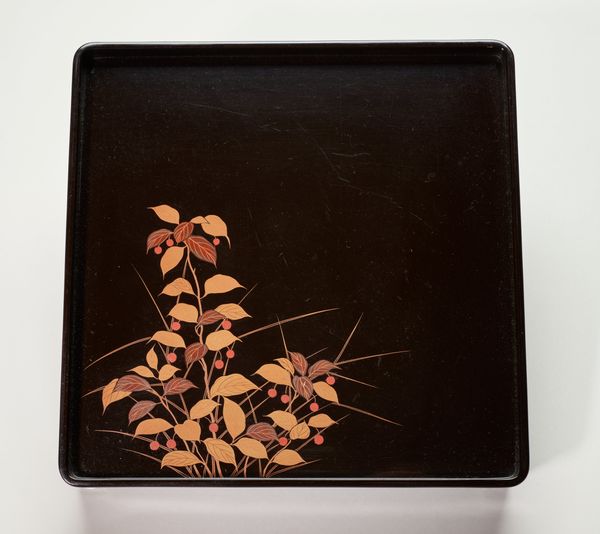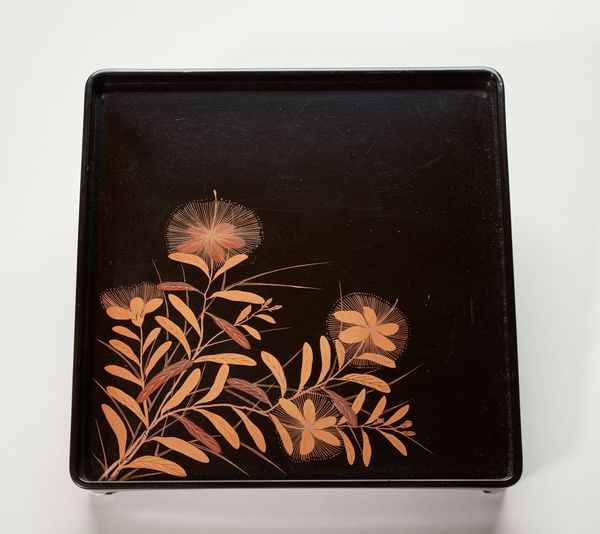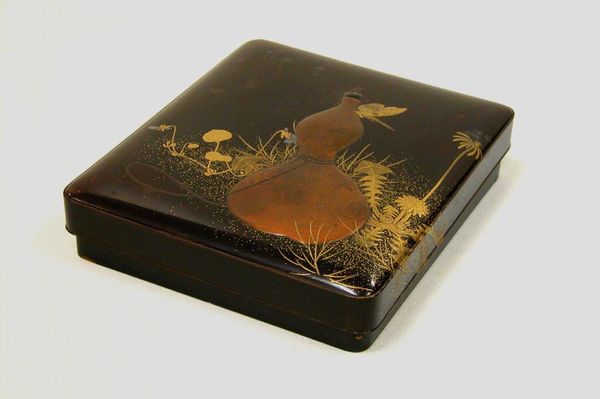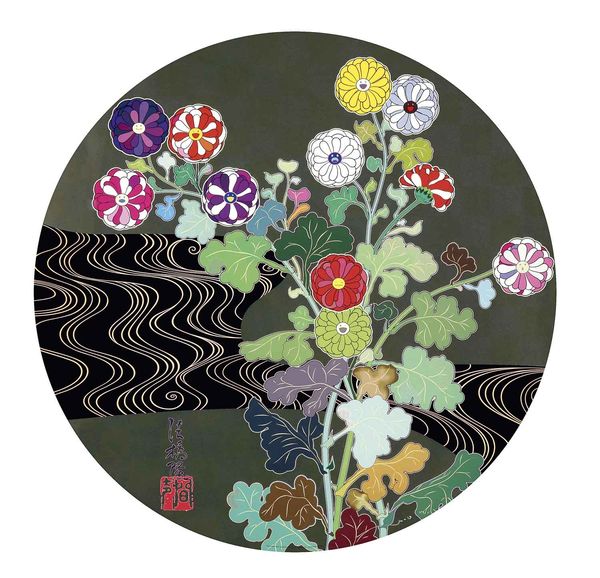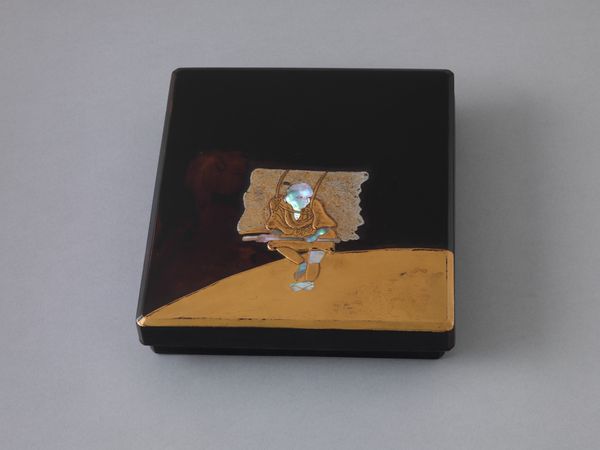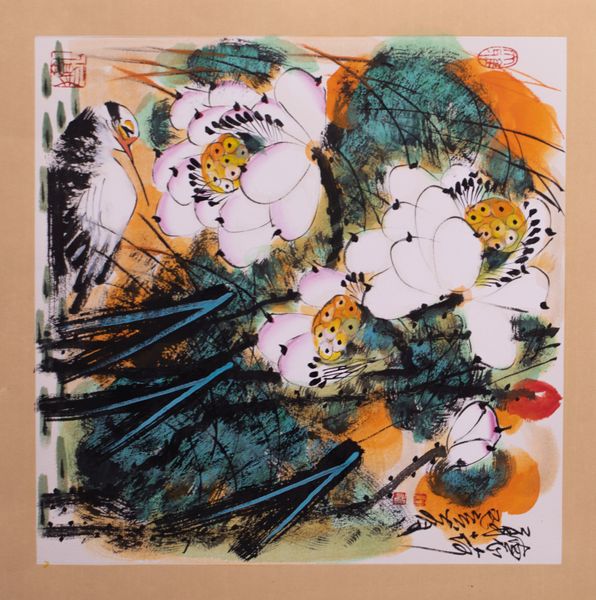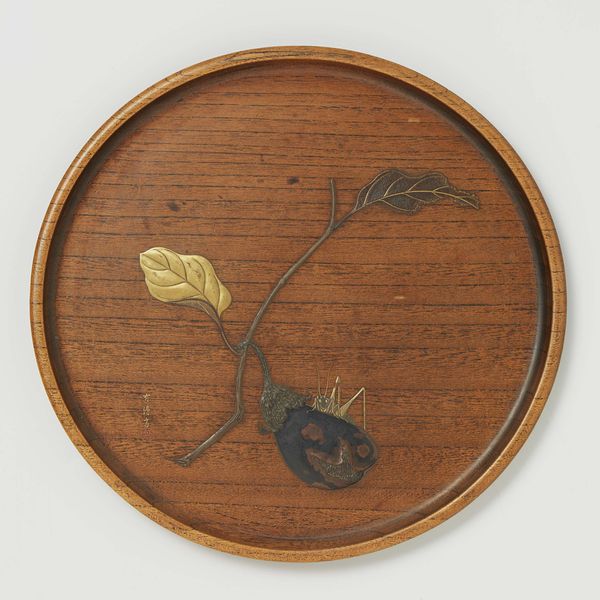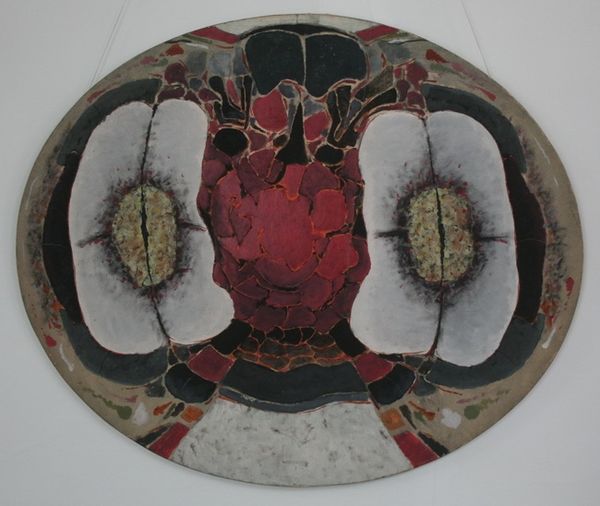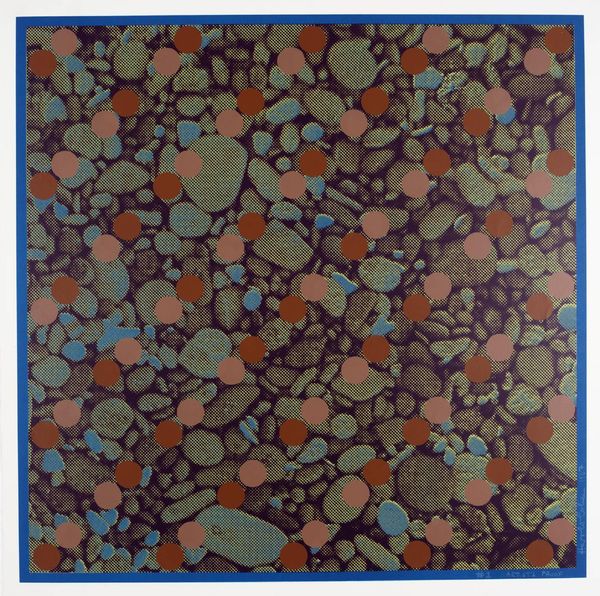
Small Serving Tray with Pink Flower Design c. late 18th century
0:00
0:00
#
kaleidoscopic
#
worm eye perspective photography
#
pop of colour red
#
red and grey tone
#
japan
#
fractal art
#
galactic
#
flower pattern
#
kaleidoscope
#
red-purple
#
motif
Dimensions: 2 3/8 × 10 3/4 × 10 3/4 in. (6.03 × 27.31 × 27.31 cm)
Copyright: Public Domain
Curator: I am immediately drawn to the graphic simplicity, how the stark black background sets off the floral design so exquisitely. Editor: Indeed. What we have here is a small serving tray attributed to Yamamoto Shunshō VI, created around the late 18th century. It currently resides in the collection of the Minneapolis Institute of Art. Let’s unpack it a bit, shall we? The context of objects intended for domestic rituals or leisurely moments holds so much cultural meaning, even today. Curator: Absolutely. This tray is like a small, contained cosmos. The dark lacquer is a void, punctuated by this burst of organic growth. The heart-shaped leaves and delicate flowers seem so deliberately placed. Do you think that the specific symbolism of flowers could relate to social hierarchy or gender expectations of its original consumers? Editor: In Japanese culture, floral motifs, particularly those used in the late 18th century, carried profound layers of symbolic meaning. The delicate pink blooms set against a dark backdrop evoke the beauty of ephemeral life, a key concept in Buddhist thought, but they also suggest ideals about feminine beauty and cultivation, which would then impact class status or dynastic succession. Think of the association of cherry blossoms with Samurai. Curator: I see your point about ephemerality; the placement of foliage right along one corner underscores ideas of renewal and change, but isn't it possible this composition critiques rigid social norms? I read its intentional asymmetry as a gentle push against established expectations. What are your thoughts on technique? The application seems precise. Editor: Yes, I concur! The lacquer work, a highly refined craft in Japan, involves many layers to produce this dark finish, and it speaks to careful application to create images with emotional impact through visual memory. The leaves have depth—some appear translucent. I suspect that this involved very specialized materials and artisanal secrets! Curator: The meticulous detail does add another layer of cultural value, transforming a utilitarian object into something sacred. To me, that detail represents an active form of resistance through art! Editor: Looking at it this way allows me to reframe this little tray. It isn't just a functional piece, but a vessel carrying a visual story about complex social negotiations. Curator: Precisely! A potent reminder that everyday objects are powerful communicators of cultural values and even dissent.
Comments
minneapolisinstituteofart almost 2 years ago
⋮
Originally from a set of ten, the five trays on display here show a variety of plant motifs associated with the seasons, and executed in hiramaki-e (low sprinkled picture) with gold and pigmented powders. The bottom of one of the trays bears the seal “Shunshō,” for the family of lacquer artisans. The Shunshō school was established by Yamamoto Shunshō (1610–1682) and continued on until the end of the 19th century. Shunshō I was well known for his mastery of the togidashi-e (polished out picture) technique, which is used on these pieces. However, the naturalism of the plant designs indicates that this is a later piece by either Shunshō V (Jirobei, b. 1734) or VI (Masanori, d. 1803).
Join the conversation
Join millions of artists and users on Artera today and experience the ultimate creative platform.
